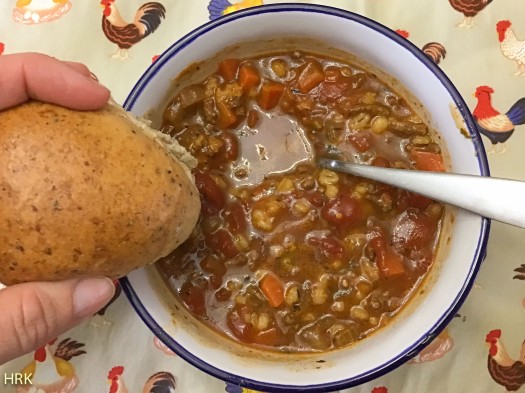This morning while cooking my oatmeal for breakfast I simultaneously started a yeast bloom so I could make bread. Once the temperature of the water was at the correct degree I stirred in honey and then dropped in the tablespoon of active dry yeast. The little grainy particles slipped below the surface of the water and I gave it stir. Instantly the water turned murky and gave off a fusty odor. I stirred some more and then let it rest. Meanwhile as I ate my porridge the yeast began to bloom, bubbling and frothing.
I then added to the frothy mixture some more warm water and honey and then some melted butter that had been cooling slightly on the counter. I gave it all a stir. The bubbliness of the mixture was flattened out. Next I tossed in some salt, some whole wheat flour, rolled oats, flax seed, poppy seeds, garbanzo bean flour and a cup of organic all purpose flour and gave it a good hard stir until it was all thoroughly combined.
The aroma of the lumpy, soupy mixture was light and happy; foretelling of good things to come even though the batter didn’t look like much yet. I covered the bowl and let it sit while I ran my son to school.
It has been a hard winter for the both of us. Lonely. Dark. Gloomy. Two and half years ago we moved from our beloved acreage in west central Alberta to join my husband who had been working in a small town tucked in valley of the Great Bear Rainforest of northwestern BC. We came with high hopes of being here for a good long while, living together as a family for the first time in over ten years. And it was good. Our dreams had come true. And it was hard. It didn’t quite go the way of happily ever after.
In fact life just kept on going in the usual fashion—with ups and downs interspersed by plateaus. We were finding our way in this new life of ours, getting our footing, making due with a life that looked a lot different from before. And then things took an unexpected turn. My husband was offered a job in a different place, a job that was everything he’d been hoping for, working towards and dreaming about. He couldn’t say no. I didn’t want him to say no. We were excited. But that meant things would be changing again. And change is hard work. I’m tired thinking about all that needs to be done as we get ready for another move to a whole other place to start all over again. The packing. The sorting. The cleaning. The finding a good place to land. The setting up a new house in a strange neighbourhood. The looking for a good school. The meeting of new people. The hope of finding a community of good people to call friends.
After dropping off the kid off at school I returned home and lifted the cover off the bowl. The yeasty smell was strong and sweet. The mixture had risen up like a sponge. Full of little popping bubbles. I added a cup of flour and gave the dough a stir. The sponge deflated.
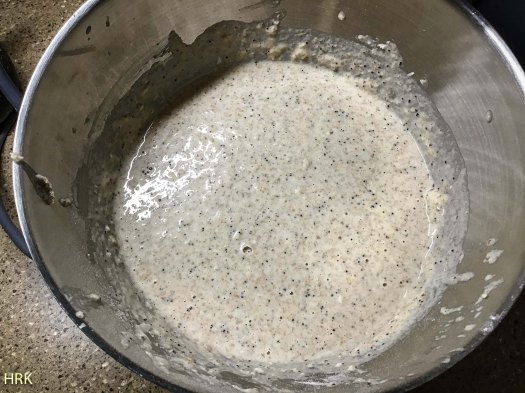
That is how I felt this winter. Deflated. Mixed up. Lumpy.
I added more flour and kept mixing. The dough was getting stiffer and harder to work. I kept adding flour and working it in bit by bit. My hands rolling and kneading the ball of dough over the flour-dusted counter top, allowing the moisture in the ball of dough to keep absorbing flour until it seemed just the right consistency. The clumps and stickiness kneaded out; the ball of dough was elastic and smooth under my fingers.
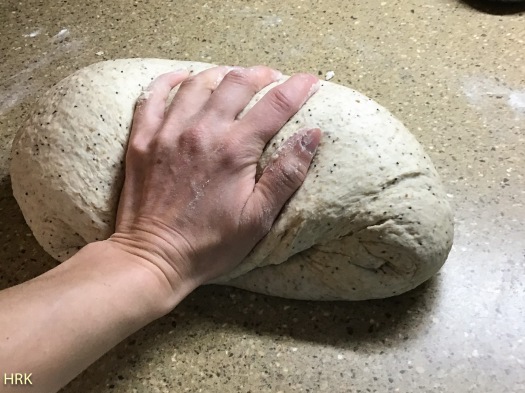
I gently placed the soft ball into the large greased bowl I inherited from my Grandma after she died. I thought of her. How much a miss her. I thought of how many loaves of bread she used to make every week to feed her family of eight. I thought of how I loved Saturday mornings when I’d go over to her house and enter her tiny kitchen and see all the fresh bread and buns cooling on her kitchen table with the most wonderful smell in the world: freshly baked bread. How I equate that fragrance with peace and love, safety and comfort, warmth and satisfaction. Shalom.
I covered the bowl with a tea towel and set it in a warm place to let the incorporated, activated yeast work its magic in the dark.
I thought of how my life seems to resemble this ball of dough. First a few ingredients stirred together in a bowl—happy and blooming. Then more ingredients mixed in—an uncomfortable adjustment. Next the rest period—a growing and rising time. Then the addition of a lot of flour and a lot of mixing and a lot of kneading—like being manhandled by the hard knocks of life: the deaths of loved ones, the uncertainty of having no job or income, the big moves across country, the loss of treasured friendships, the crumbling of hopes and dreams, the toxic work environments, the failings of good health, the blindsides that pop out of no where and take a chunk out of you. Only to be put in the dark and left to sit all small and deflated.
And yet…
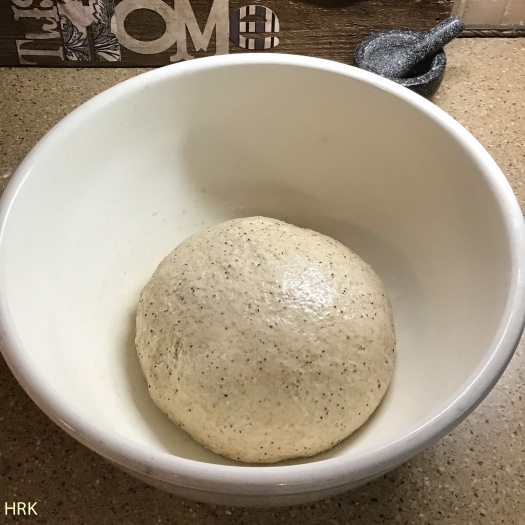
I’m a believer that the Spirit of God is here in the right now. Within me. Incorporated. Enmeshed. Hidden. And at work.
Like the yeast in the ball of dough is at work. Doing what it does best. Making dough rise.
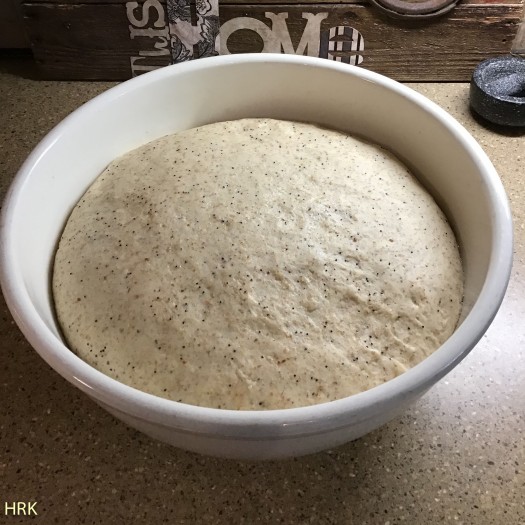
An hour later I take the tea towel off my Grandma’s white bowl and see that the hard little knot of dough has expanded half way up. Risen. Airy, light and fluffy with a thin fine crust stretched across the smooth surface trapping air in a million little pockets underneath. I lean close and shut my eyes, breathing in the heady fragrance the yeast gives off. The dough has no idea what is coming next. If it could think, maybe it would believe it had reached it’s fullest potential. I let the dough rest for a moment in the light, and then stuck my fist in the middle.
The dough collapses around my fist. Sagging back down into a misshapen lump at the bottom of the bowl. I roll it around until it forms a smooth ball again. It’s spongier feeling now, as opposed to the first time. Not all the air has been knocked out; it retains more than it had in the beginning.
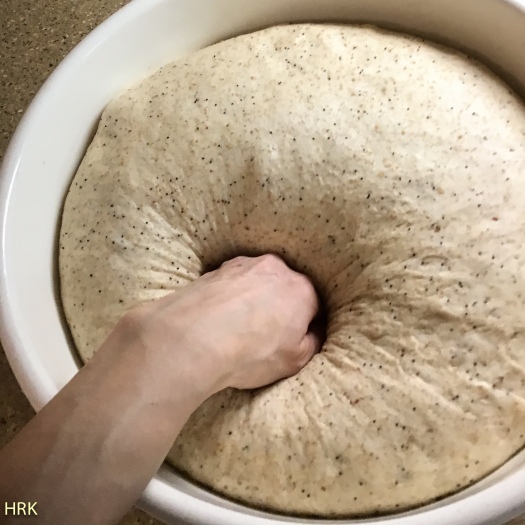
Again I cover the bowl and let it sit in the warm dark to start the whole process over again. The smell of the yeast getting richer and more full-bodied as the dough rises this time. It rises even higher the second time around and the flavour will have become richer and more intense.
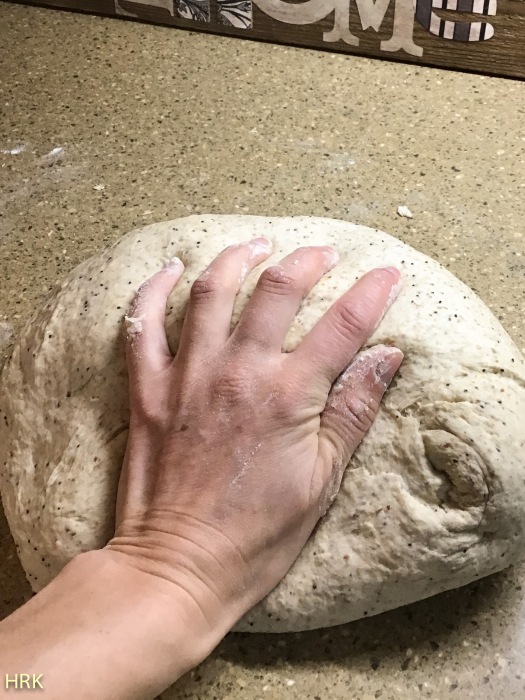
After another hour I take the tea towel off and again punch the dough down. I knead the dough and then using my big serrated knife I cut it into equal sections. Because I like to be exact, I use a scale and pinch off bits until I get each section to weigh the same. I press and tug and knead and roll some of the dough into log shapes and tuck them into greased bread tins. The rest of the dough I cut into small two-ounce sections and roll two at a time into tight, smooth, little balls and place them in a round baking dish.
I think about how the whole process must seem rather violent and painful and pointless to the dough—if it had feelings that is. Maybe, the dough feels like just giving up at this point. It hurts too much. It takes far too much energy to try and rise again when all that happens is a punch in the guts, being ripped in two then smashed and pressed and torn apart and put in strange places only to be left in the dark all over again, forgotten and alone.

But then the yeast begins its secret work again. In the dark. In the lonely place.
And despite its feelings to the contrary the dough discovered it was being compelled by the action of the yeast to rise up. Finding it can’t help but expand and grow. The yeast hidden within is too powerful, its presence too irresistible to ignore.
I turned on my oven and put the temperature to 400 degrees Fahrenheit. I lifted the tea towel off of the loaf pans. The dough has risen above the rims. The tops are rounded nicely with a thin skin helping to hold the loaf’s shape. If I jostled or bumped the tins the dough could deflate and fall. I pressed a finger gently into the delicate, papery skin and watched as the dent my finger made slowly filled back in. It wasn’t too springy; there was still room for expansion.
It was time.

I put the loaves in the oven and shut the door and turned the heat down to 350 degrees Fahrenheit because if the heat is too high for too long the bread will burn and not cook through properly.
The heat of the oven activated the yeast into overdrive and forced the dough to puff up even greater, but at the same time the heat made the fragile, thin skin become tougher, stronger. The shape of the loaf was set. It would not grow any taller, however it also would no longer collapse easily like it did before. The gluten strands making up the infrastructure of the dough have stiffened, effectively and perpetually trapping the air in hardened little cells. The crust darkened under the heat turning the loaves from pale off-white, to light beige to a rich golden brown.
The timer went off so I opened the oven and a blast of steamy heat hit my face. The aroma of baking bread swirled around me as I pulled out the golden loaves and set them on a cooling rack. I ran a stick of butter over the dry, brown crusts making the bread look shiny and glossy. Attractive. Complete. With a practiced flip, I removed the loaves from the tins and set them to cool on the rack.

On the stove top a hamburger barley soup simmered under the lid of my Dutch oven. My stomach grumbled in anticipation. But it isn’t yet time. I still have to wait for the bread to cool or it will not stand up to the slicing of a knife. I’m sure if the bread has any feelings it wouldn’t appreciate what comes next. But thank God it doesn’t because I can hardly wait for the bread to cool so I can slice it up and eat it for my dinner.
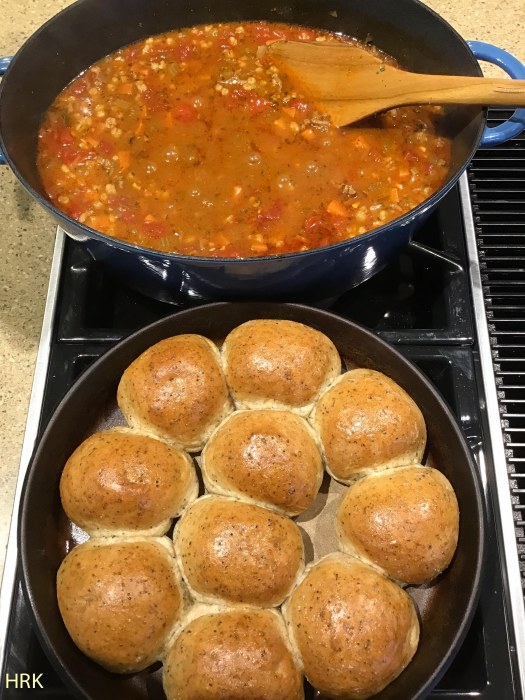
FYI: I couldn’t wait for the bread to cool after all, so I took a couple of the buns to enjoy with my hearty, homemade soup. And it was good. It was very good.
